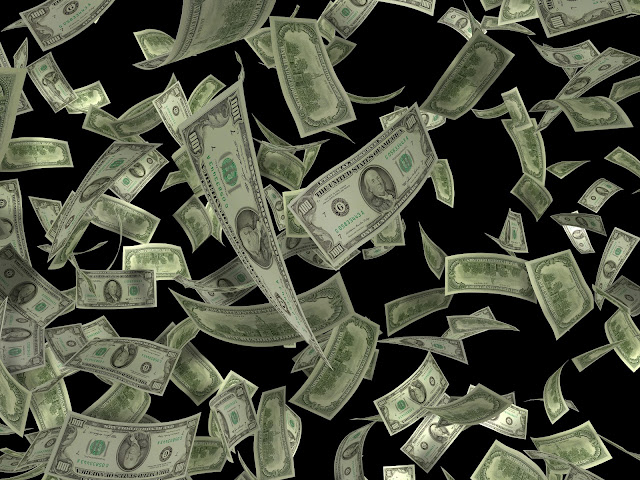What Is a Managed Currency, and How Does It Work?
A managed currency is one in which the value and exchange rate are modified by central bank action. This could imply that the central bank raises, lowers, or preserves the value of the currency, which is sometimes tied to another.
Managed Currencies: An Overview
Currency is a financial institution's or government's current liability and demand instrument in the form of accounting credits and paper notes that can circulate as a widely accepted replacement for money and be legally designated as legal tender in a country. A currency is managed by a central bank, government treasury, or other monetary authority, which is usually granted complete responsibility over the creation and domestic distribution of money and credit in a country. In this sense, all currencies are regulated in terms of supply and circulation inside their own borders, with the stated goals of price stability and economic growth.
To manage a currency's exchange rate in the global market, a central bank may interfere explicitly in foreign currency exchange markets. In this sense, all currencies are managed currencies in the sense that the currency manager decides whether to let their currency float or actively intervene in the exchange markets. The degree to which the currency issuer really decides to actively intervene affects whether a currency is regarded a managed currency or not at any given point in time, according to traders' jargon.
Whether a currency has a fixed or floating exchange rate is determined by the degree of active management. Most currencies are ostensibly free-floating on the market in relation to one another nowadays, but central banks will intervene if they believe it is necessary to strengthen or weaken a currency if its market price falls or rises too much in comparison to other currencies. In the most severe circumstances, managed currencies may have a fixed or pegged exchange rate that is maintained against other currencies through ongoing, active management.
How Does It Work?
Central banks control a country's currency through monetary policies that vary greatly depending on the country. These economic policies are typically divided into four categories:
To manage growth, employment, consumer spending, and inflation, the government issues currency and sets interest rates on loans and bonds.
Providing loans and services to a nation's banks and government, as well as regulating member banks through capital or reserve requirements.
By purchasing government debt obligations, it acts as an emergency lender to distressed commercial banks and, in some cases, the government.
Buying and selling securities, including foreign currencies, on the open market.
Direct currency or capital controls, for example, could be used to affect currency prices and exchange rates. Unconventional or non-standard monetary policy refers to a group of policies that are always being developed. Central banks use aggressive monetary policy to impact domestic price inflation rates, as well as their countries' GDP and unemployment rates, which affect their currency's worth in foreign exchange.
By adjusting the supply available on the market, these acts boost or lower the market value of currencies in terms of other currencies or real commodities and services. The major job of monetary authorities is to manage the market value of their currencies (or their inverse—price levels) in both local and foreign currency markets.
Currency Management Types
The majority of the world's currencies engage in a floating currency exchange system to some extent. The prices of currencies shift relative to one another in a floating system based on market demand for the currencies' foreign exchange. With typical daily volumes in the trillions of dollars, the global foreign exchange market, also known as forex (FX), is the world's largest and most liquid financial market. Currency exchange transactions can be for the spot price, which is the current market price, or for a future delivery option forward delivery contract.
A clean float or pure exchange occurs when currency prices vary simply as a result of domestic money supply and demand interacting with foreign exchange demand. There are almost no currencies that truly have a free float. At least to some extent, all of the main world currencies are managed. The US dollar, the European Union euro, the British pound, and the Japanese yen are examples of managed currencies. The extent to which central banks interfere differs per country.
In a fixed currency exchange, the government or central bank fixes the rate to a commodity, such as gold, or to another currency or a basket of currencies, in order to keep the currency's value within a tight band and provide greater certainty for exporters and importers. The Chinese yuan was the last major currency to have a fixed exchange rate. China relaxed this policy in 2005, opting for a managed floating currency system in which the currency's value is allowed to fluctuate within a set range.
Why Managed Currency?
Genuine floating currency exchange may be subject to some volatility and unpredictability. For example, external forces outside of government control, such as commodity prices, such as oil prices, can influence currency prices. A government will interfere in order to maintain control over its monetary policies, calm markets, and reduce some of the uncertainty.
A country can control its currency by allowing it to fluctuate between upper and lower boundaries, for example. The country's central bank may buy or sell its own or other currencies if the price of money moves outside of these bounds.
In rare situations, a government's central bank may intervene to assist in the management of a foreign power's currency. For example, in 1995, the US government purchased massive amounts of Mexican pesos to help bolster the currency and avert an economic disaster when the peso began to quickly depreciate.








0 Comments